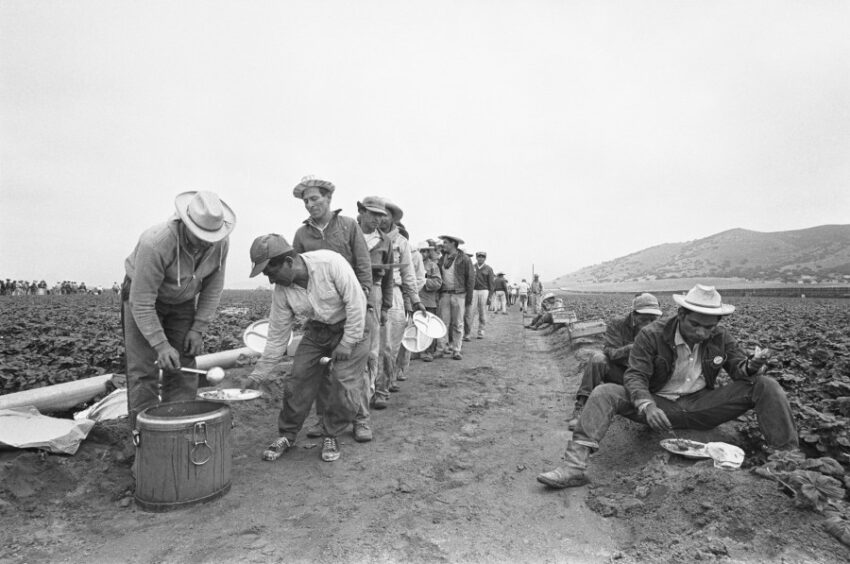McALLEN, Texas (Border Report) — U.S. Rep. Monica De La Cruz, R-Texas, has proposed a bill to streamline farmworker visas for migrants that harkens back to the Bracero Program of the 1940s.
If approved by Congress and the president, De La Cruz says the Bracero Program 2.0 Act would help to stabilize the agricultural workforce on the border by legally bringing in migrant workers and making it easier for farms to employ these workers with H-2A visas.
“For decades, the Bracero Program created new opportunities for millions and provided critical support for Texas agriculture. I am leading efforts to revive the Bracero spirit by reforming H-2A visas,” De La Cruz said in a statement.

She’s calling it a new iteration of the old Bracero Program, which started in 1942 and allowed millions of Mexican men to work legally in the United States on short-term labor contracts to fill jobs vacant due to labor shortages during World War II.
“This will provide solutions desperately needed for hard-working immigrants. With workforce shortages challenging our communities, the Bracero Program 2.0 will bring stability and certainty for South Texas,” said De La Cruz who is on the House Agriculture Committee and lives in McAllen.
If approved the legislation would:
- Streamline the H-2A application process into a single, centralized electronic portal, reducing administrative burden, time, and costs for employers participating in the program.
- Expand the H-2A program to include greenhouses and indoor farms.
- Promote fair and predictable compensation for H-2A workers by setting the wage rate to the state’s minimum wage plus $2.00 per hour.
- Provide workers with a regional labor permit valid for agricultural work within a specified state, allowing permit holders to change employers in the same sector without reapplying for a visa.
- Require the GAO to report on the program within one year.
- Require the GAO to report on H-2A worker protections and enforcement, including any workplace violations, unsafe working conditions, unsafe living conditions, and underpayment of wages.
- Extend H-2A contracts from 10 months or less to 12 months.
De La Cruz told KVEO on Tuesday that the reason for extending the contracts to a year, from 10 months, is because of different growing seasons for different crops that requires workers to stay longer.
She says the biggest problem with H-2A visas to date is that they require multiple agencies to sign off on the visas and require multiple forms filled out by the worker and employer. Often times it’s frustrating and some skip the process and enter illegally to work the fields, which is something she says they want to stop.
“We just need to have a focus in bringing these application processes together so that they are fast and they are efficient and they get our labor force to our farmers who desperately need it,” De La Cruz on Tuesday told Nexstar station KVEO.
She says this bill came from the Agriculture’s Bipartisan Ag Labor Working Group that included a roundtable held in South Texas earlier this year.

“We have an opportunity to look at our immigration process and bring hard-working, legal immigrants into the United States to help our South Texas farmers. It’s been done in the past with our Bracero Program, it was very successful. It was a respected program and what I’m doing is reviving the spirit of the Bracero Program with modernization and making it efficient and streamlining the process so it makes it easier for our farmers and ranchers to get the ranchers we need,” she told KVEO.
The old Bracero Program, formerly called the Mexican Farm Labor Program, operated from Aug. 4, 1942 until Dec. 31, 1964 and brought in more than 4 million Mexican farm workers during the 22 years, according to the Library of Congress archives.


El Paso, Texas, served as the U.S. point of entry from Ciudad Juarez, Mexico and served as the recruitment center for the nationwide program, which was administered with the Farm Bureau and U.S. Agricultural Department.
As mechanization and industrialization became more widespread then the program became less popular and eventually was ended.
Farm workers also complained that they remained in set jobs and did not develop additional worker skills, according to Immigration History, a project at the University of Texas at Austin’s Department of History.
There also were charges of corruption and payments withheld.
“In practice, many became trapped in cycles of working abroad for higher wages in harsh manual labor agricultural jobs in the United States. The bracero program’s costs, employers’ abuse, and officials’ corrupt practices led many Mexicans to seek work in the United States illegally outside of its auspices, and readily found employment with U.S. agricultural conglomerates and other employers seeking workers for lower wages,” according to Immigration History.
Sandra Sanchez can be reached at SSanchez@BorderReport.com.
 Read: Read More
Read: Read More




